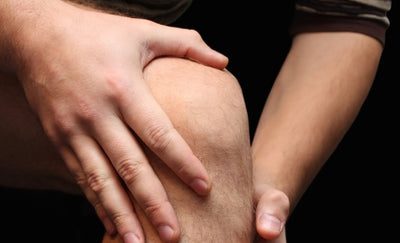
What is Arthritis?
When you think of arthritis, what do you think of? Commercials on television with older adults rubbing throbbing knuckles, knees and feet? Popular culture in the twentieth century has persuaded us to believe that arthritis is one singular condition that causes pain in our bones and joints when we reach a certain age. But arthritis isn’t just one condition and it doesn’t just affect one type of person.
The Arthritis Foundation actually clarifies that arthritis isn’t just one disease. In fact, arthritis is considered to be a general term that simply describes joint pain or joint disease. There are actually over 100 different types of arthritis and related conditions (like fibromyalgia and osteoarthritis). The fact that arthritis can be classified into 100 different types, however, does not detract from its severity. It is the leading cause of disability in the United States and it can affect people of all ages, sexes, and races. More than 50 million adults and 300,000 children are affected by some type of arthritis.
There are four major types of arthritis:
Click view more to see a definition of each type of arthritis.
Degenerative
Inflammatory
Infectious
Metabolic
What are the symptoms of arthritis?
- Joint pain that develops gradually over time (osteoarthritis)
- Painful swelling, inflammation, and stiffness in the fingers, arms, legs, and wrists occurring in the same joints on both sides of the body, especially upon awakening (rheumatoid arthritis)
- Infectious arthritis might present in fever, chills, joint inflammation, tenderness and severe pain
- Problems doing everyday tasks due to pain (all arthritis)
- Trouble moving (all forms)
- Joints that look red (all forms)
If you suspect that you are suffering from any form of arthritis, make an appointment to be seen by a doctor or other medical professional.
The Mayo Clinic has several tips for managing the pain that arthritis and its related conditions can create. In addition to seeing a doctor and getting a clear plan on how to fight the symptoms of arthritis, the Mayo clinic recommends that you:
- Do some gentle exercise in the evening or in the morning. It is important to keep the body’s muscles active and strong. However, it isn’t always easy with the pain that arthritis can cause, which is why you should look into using an over-the-counter topical pain relief cream like Super Blue Stuff OTC. It is an all-natural pain relief cream that can be applied to the painful area to encourage relief and greater mobility, giving you the ability to exercise and strengthen your body.
- Have a more balanced diet. By feeding your body the appropriate foods, you will be rich in the nutrients that you need for joint health.
- Quit Smoking. If you’re a smoker, quitting can help increase your overall body health and decrease the inflammation in your joints caused by the chemicals found in commercial cigarettes. If you need help with quitting, there are great resources found at Quit Smoking!
- Emotional therapy can also be helpful, to take your mind off of the pain and focus on peaceful healing. Seeking help from various sources like instructional mediation videos, articles on relaxation, or seeing a professional counselor can influence the mind in a positive way.
- Most importantly, stay hopeful for your healing. It isn’t impossible to recover from arthritic conditions, and you can do it!
Sources:
http://www.mayoclinic.org/diseases-conditions/arthritis/in-depth/arthritis/art-20046440
http://www.arthritis.org/about-arthritis/understanding-arthritis/what-is-arthritis.php
http://www.webmd.com/osteoarthritis/knee-pain-16/osteoarthritis-diet
http://www.webmd.com/osteoarthritis/guid/arthritis-basics#1
http://www.webmd.com/osteoarthritis/guide/understanding-arthritis-symptoms
https://www.cdc.gov/tobacco/campaign/tips/quit-smoking


 {{/image.src}}
{{/image.src}}





